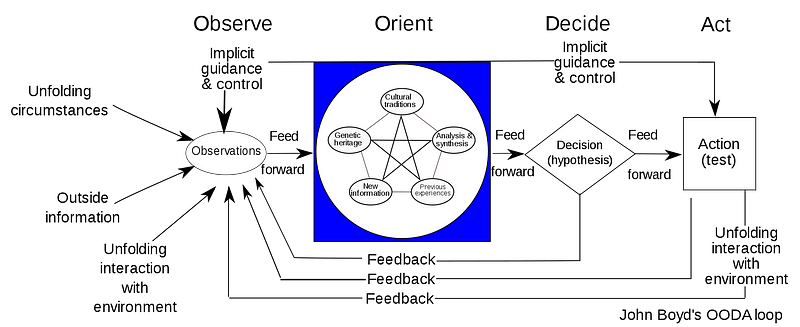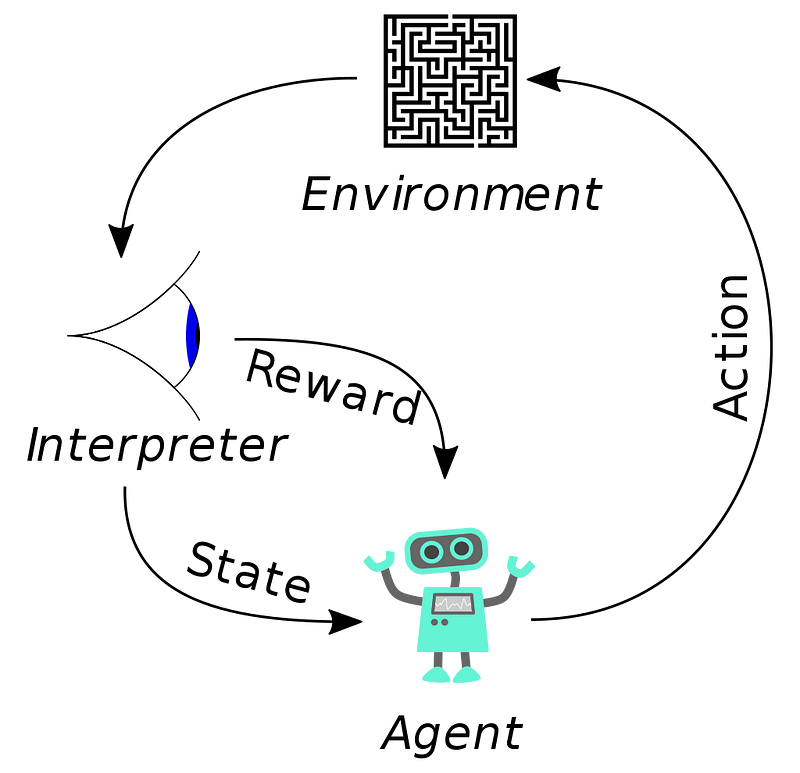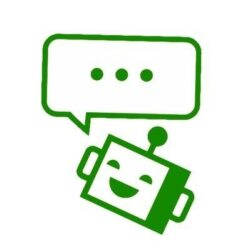
Fellow futurists:
In today’s fast-paced and ever-changing business world, companies are constantly seeking ways to innovate and stay ahead of the competition. One approach to achieving this agility is using a process known as the OODA loop, a decision-making framework developed by US Air Force Colonel John Boyd. By adopting this approach, business leaders, entrepreneurs, and innovators can learn valuable lessons on how to accelerate innovation and gain a competitive edge.

Observation to Action: Using the OODA Loop to Make Informed Business Decision
The OODA loop is a four-step decision-making process that includes observe, orient, decide, and act. The first step, observe, involves gathering information and data from the environment. The second step, orient, involves analyzing and interpreting this information to gain a clear understanding of the situation. The third step, decide, involves making a decision based on the analysis, and the fourth step, act, involves acting based on the decision.
By following this process, organizations can make informed decisions and act quickly to capitalize on opportunities in the market. It also allows organizations to respond quickly to changes in the market and adjust their strategies accordingly.
As a business leader, entrepreneur, or innovator, adopting the OODA loop can help you stay ahead of the competition and drive innovation within your organization. By observing the market and orienting yourself to the latest trends and technologies, you can make informed decisions and act quickly to implement new strategies. The OODA loop is a continuous process that allows you to constantly monitor and adjust your approach based on feedback from the market, enabling you to stay ahead of the curve and drive innovation within your organization.
Using the OODA Loop for Innovation
The OODA loop can be a powerful tool for driving innovation within organizations. By continuously observing the market and orienting to new information, organizations can make faster and more informed decisions, allowing them to stay ahead of the competition. Here are two practical examples of how the OODA loop can be applied to drive innovation:
- Developing a new product: Using the OODA loop, organizations can continuously observe the market and orient to new trends and customer needs. This allows them to develop a product that is more aligned with customer needs, reducing the risk of failure and increasing the chances of success.
- Streamlining operations: The OODA loop can also be used to improve operational efficiency by continuously observing and orienting to new information. By identifying inefficiencies and making informed decisions, organizations can improve their processes, reduce costs, and increase productivity.
By using the OODA loop to drive innovation, organizations can make faster and more informed decisions, stay ahead of the competition, and achieve greater success. The OODA loop is a continuous process, and organizations that embrace it as part of their culture will be better positioned to succeed in today’s rapidly changing business environment.
A Use Case for the OODA Loop in Action
In this section, we will explore the four stages of the OODA loop and how they can be applied to drive innovation in technology strategy. By applying the OODA loop, we can gather and analyze relevant data, make informed decisions, and take action to continuously improve and innovate our technology solutions.

Observe:
In the OODA loop, the “Observe” stage involves collecting and analyzing relevant data to gain a comprehensive understanding of the current situation. As a technology strategist, this could include understanding the client’s business goals, market trends, and the potential use cases of blockchain-based digital collectibles. By using data to inform our decision-making, we can make more informed and strategic choices that are backed by evidence rather than gut instinct.
For example, let’s say we are working with a client who wants to enhance their brand image and increase customer engagement. We would start by collecting and analyzing data on their target market, competitors, and customer feedback. This would allow us to identify areas for improvement and potential opportunities for implementing blockchain-based digital collectibles.

Orient:
The “Orient” stage of the OODA loop involves interpreting the data collected in the “Observe” stage and using it to develop a comprehensive understanding of the current situation. This involves analyzing the data and identifying patterns and trends that can inform decision-making.
For example, after analyzing the data collected in the “Observe” stage, we may identify that the client’s target market is interested in unique, personalized products and experiences. We could then interpret this data to understand that implementing a blockchain-based digital collectible platform could provide customers with a new and exciting way to engage with the brand.

Decide:
The “Decide” stage of the OODA loop involves using the insights gained in the “Observe” and “Orient” stages to make informed decisions. This involves selecting the right technology and tools to address the identified areas for improvement and meet the client’s business goals.
For example, based on our analysis in the “Observe” and “Orient” stages, we may recommend implementing a blockchain-based digital collectible platform to enhance the client’s brand image and increase customer engagement. We would work with the client to select the right technology and tools to implement this solution, taking into account factors such as budget, timeline, scalability, and the business value we are wanting to achieve during this transformation.

Act:
The “Act” stage of the OODA loop involves implementing the decisions made in the “Decide” stage and monitoring the results. This involves tracking key performance indicators (KPIs) and making adjustments as needed to continue driving value for the client.
For example, after implementing the blockchain-based digital collectible platform, we would track KPIs such as customer engagement, brand awareness, and sales. We would use this data to monitor the success of our strategy and adjust as needed to continue driving value for the client. This could include expanding the platform to include new products or features, optimizing the user experience, or exploring new technologies to stay ahead of the competition.

Reinforcement Learning and OODA Loop: Two Sides of the Same Coin
While it isn’t the focus of the current AI hype/news cycle, I can’t write an article about the OODA loop without talking about one of my personal favorite ML fields: reinforcement learning.
Reinforcement learning, like the OODA loop, is a process of continuous improvement based on feedback from the environment. The difference is the RL is focused on solving complex computer problems. It has been used to solve problems in gaming and robotics and has shown promise in a wide range of industries. In fact, it’s not hard to draw parallels between the OODA loop and reinforcement learning — both involve a cycle of observation, orientation, decision-making, and action. As we continue to develop new technologies and strategies for innovation, it’s important to keep in mind the lessons we can learn from these iterative approaches to problem-solving.
A famous example of reinforcement learning in action is the development of AlphaGo and AlphaZero, two artificial intelligence programs developed by Google. AlphaGo and AlphaZero were trained to play the games of Go and chess, respectively, using reinforcement learning. By repeatedly playing against themselves and learning from their successes and failures, these programs were able to achieve unprecedented levels of success and defeat human champions. By using feedback from the environment to continually adjust and improve their decision-making, these AI programs were able to achieve unprecedented levels of success in complex games that were once thought impossible for machines to win.
This highlights the importance of adopting a similar mindset in our approach to innovation and problem-solving, whether it’s developing new technologies or enhancing existing products and services. By continually gathering data and feedback from the market and our customers, and using it to inform our decisions, we can stay ahead of the competition and drive value for our clients and customers.
Innovation can benefit greatly from the application of reinforcement learning principles. By testing and leaning from various strategies and tactics, organizations can quickly adapt to changes in the market and make better decisions. The OODA loop can serve as a useful framework for applying reinforcement learning concepts to the innovation process, helping businesses stay agile and competitive in a rapidly changing landscape.
Conclusion
During my time serving in the US Marine Corps and in emergency services, I witnessed firsthand the power of the OODA loop in dynamic situations. We used this framework to rapidly assess chaotic situations, understand changing environments, and make data-driven decisions in response. The OODA loop allowed us to move with agility and respond quickly to both decentralized threats and opportunities.
Adopting this iterative approach to problem-solving allowed the military to better combat networks of sparsely connected insurgents, marking a fundamental shift from traditional hierarchical thinking. Today, it has been adapted for use in a variety of fields, including technology innovation and machine learning. The OODA loop is a prime example of this philosophy in action. By constantly gathering information, orienting ourselves to new developments, and making informed decisions based on that information, we can stay ahead of the curve and succeed in even the most challenging environments.
Whether we are on the battlefield or in the boardroom, the principles of the OODA loop (and policy gradients) can help us make better decisions and achieve our goals more effectively.

